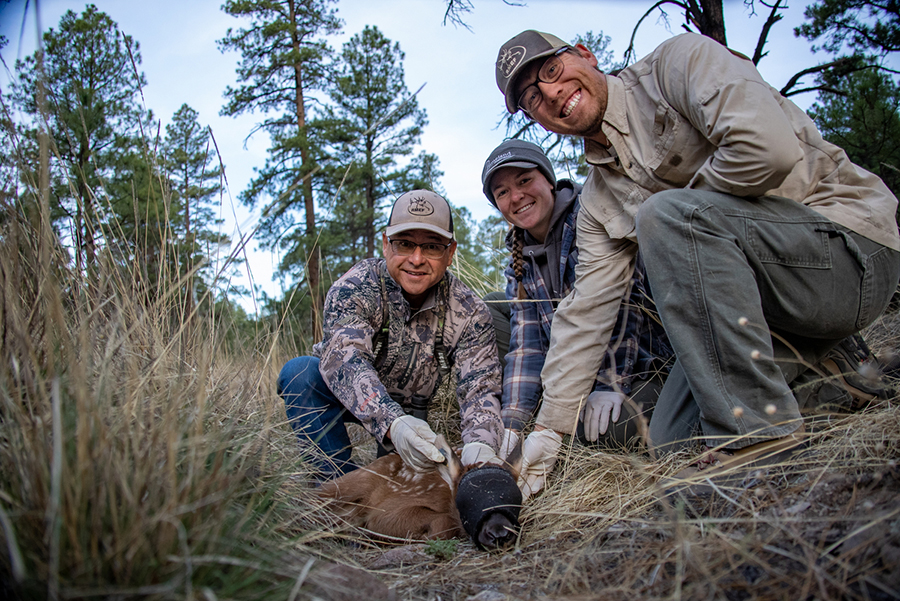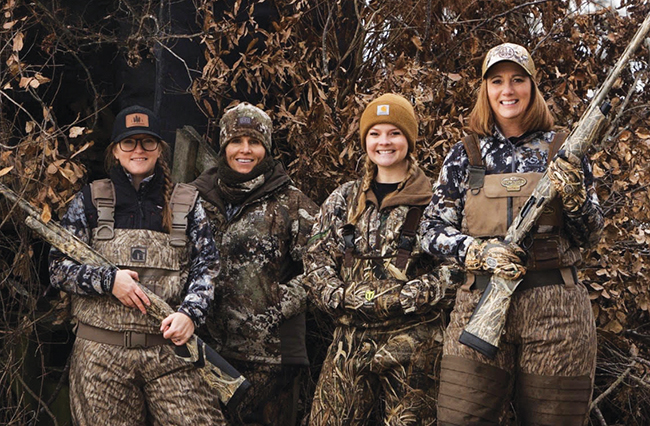Herd Mentality
Conservation Nonprofits Have Outsized
Benefits For Entire Ecosystems
There’s a membership organization, or two, dedicated to the conservation of just about every species of North American wildlife you can imagine.
Some examples: Wild turkeys? Yep, the National Wild Turkey Federation (NWTF) advocates for what some have called America’s bird. Mule deer? Sure, the Mule Deer Foundation looks out for this iconic Western deer species. Same with elk (Rocky Mountain Elk Foundation), waterfowl (both Ducks Unlimited and Delta Waterfowl), pheasant and bobwhite quail (Pheasants and Quail Forever), trout (Trout Unlimited), white-tailed deer (National Deer Association and Whitetails Unlimited) and even inshore sport fish (Bonefish & Tarpon Trust). Other groups advocate for wild sheep,
forest grouse, salmon and steelhead, mountain goats, walleye, striped bass, tortoises and butterflies. Even carp.
Benefitting An Entire Landscape
This menagerie of non-profit groups and their attendant species is one of the main legs of America’s conservation stool, along with industry manufacturers, state and federal agencies and citizen participants, from hunters, anglers, trappers and shooters (HATS) to birdwatchers and public-land advocates.
But if you think the Rocky Mountain Elk Foundation (RMEF) is only interested in elk, you’d be wrong, just as Trout Unlimited is interested in far more than fish. One of the great values of these “critter groups” is their impact extends beyond their totemic species.
Every habitat project RMEF funds not only benefits elk but other species on the landscape, which might include bighorn sheep and mountain grouse, wild turkeys and native plants. Same with the habitat work conducted by NWTF and its partners. Forest-health projects funded by the NWTF benefit salamanders and native trees, monarch butterflies and red fox.
Most of these groups originated from a small group of passionate citizens who banded together to raise money and advocate for their namesake critter. But over time, the most forward-looking of these groups have enlarged their conservation footprint and ambition.
Think Ducks Unlimited is interested only in ducks? No, it has expanded to be a very effective water-quality organization, and its work benefits huge expanses of aquatic habitat, as well as humans who rely on clean water. Pheasants Forever has become a grasslands conservation group, invested in habitat work that benefits pheasants with additional benefits for native birds, bees, butterflies, earthworms, and the farmers who rely on healthy soils and sustainable landscapes. Trout Unlimited is less an angling club than it is a cold-water habitat organization. Work underwritten by the Mule Deer Foundation benefits pronghorn antelope, sage grouse and other residents of America’s vast Western lands, along with conserving ancient migration routes used by big-game species for millennia.
Amplified Impact
Beyond raising the visibility of their signature species, funds raised by these non-profit groups are often leveraged by public funds, amplifying their conservation impact. Many critter groups employ staff biologists and land-acquisition experts who work closely with their state and federal counterparts to broaden the groups’ impact from single properties to wider landscapes.
But the engine of these conservation groups remains committed volunteers who donate their time, funds and enthusiasm to boost the populations and visibility of their adored species.
Consider joining a non-profit that aligns with your favorite species, or if it doesn’t already exist, create one. Last we looked, there’s no conservation organization devoted to squirrels, badgers or mosquitoes.
Editor’s Note: This article was provided by the Outdoor Industry Communication Council, managed by Outdoor Stewards of Conservation Foundation and Wildlife Management Institute.




